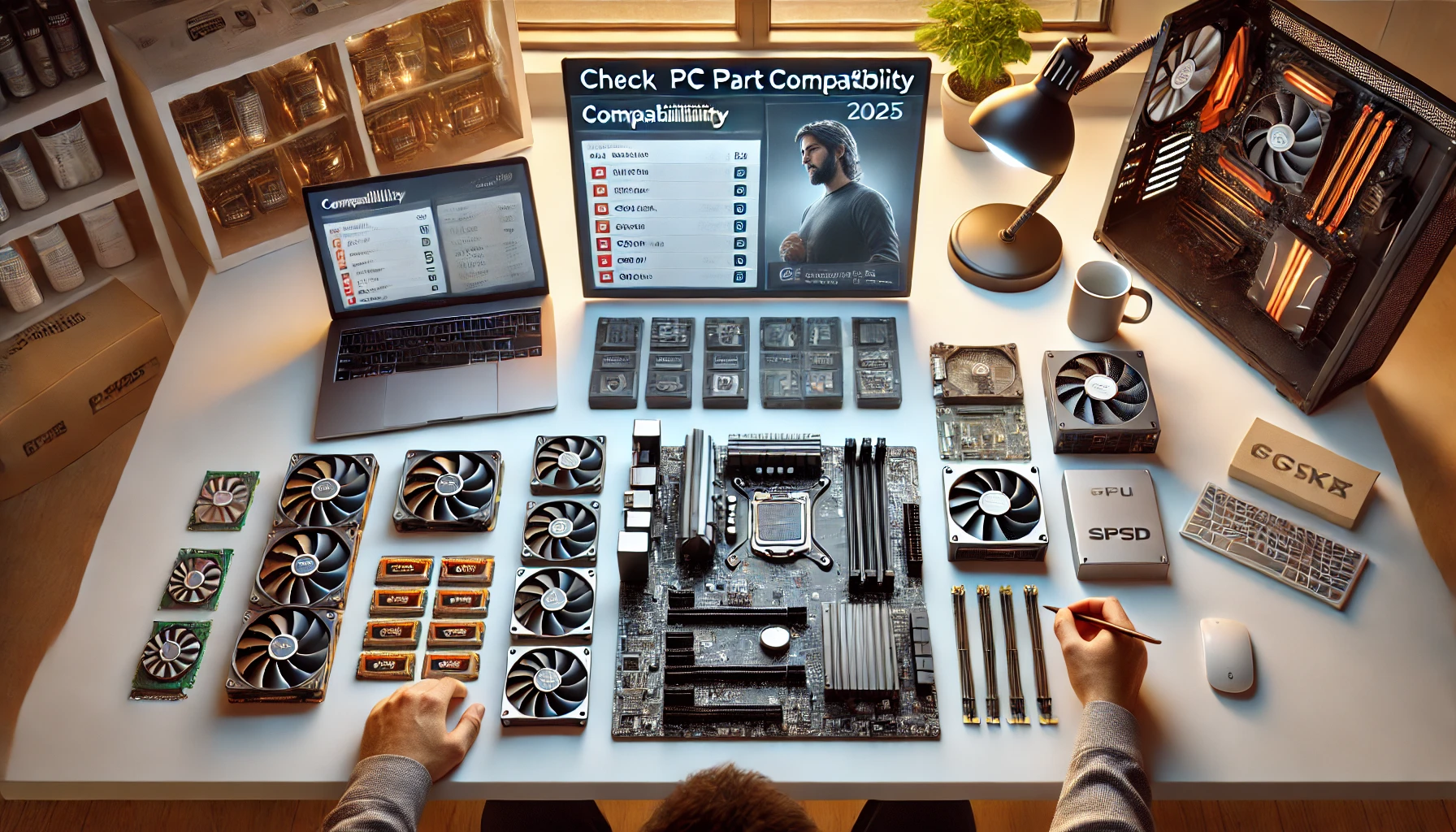Building a PC is one of the most rewarding experiences for tech enthusiasts and beginners alike. But if there’s one thing that can derail your project fast, it’s hardware incompatibility. Choosing parts that don’t work together can lead to wasted money, frustration, and delays in completing your build.
In this guide, you’ll learn how to check compatibility between all major components when building a PC in 2025—and avoid the most common mistakes.
Why Compatibility Matters
A single incompatible part can prevent your PC from working entirely. Whether it’s a CPU that doesn’t fit the motherboard socket or RAM that’s not supported, small mismatches can cause big problems.
Verifying compatibility upfront will:
- Prevent boot failures
- Avoid physical fitment issues
- Help you budget smarter
- Save time on returns or replacements
- Ensure maximum system stability and performance
1. CPU and Motherboard Compatibility
Your CPU must match the socket and chipset of the motherboard.
For Intel CPUs (2025):
- 13th/14th Gen → Socket LGA 1700
- 15th Gen (Arrow Lake) → Socket LGA 1851
For AMD CPUs:
- Ryzen 5000 Series → Socket AM4
- Ryzen 7000/8000 Series → Socket AM5
Also check:
- Chipset support (e.g., AMD B650, X670 / Intel B760, Z790, Z890)
- BIOS version (some motherboards need updates to support newer CPUs)
💡 Use the motherboard’s official support list to confirm CPU compatibility.
2. RAM Compatibility
Your motherboard must support the type, speed, and capacity of your RAM.
- DDR4 and DDR5 are not cross-compatible
- Most AM5 and LGA 1851 motherboards use DDR5 in 2025
- Check:
- Max capacity supported (e.g., 64GB, 128GB)
- Number of RAM slots (2 or 4)
- Supported RAM speeds (e.g., 5600MHz, 6000MHz)
💡 Enable XMP or EXPO in BIOS to run RAM at full speed.
3. GPU Compatibility
Almost all modern GPUs use a PCIe x16 slot. However, there are still things to verify:
- Size of the GPU – Will it fit in your case?
- Power connectors – Does your PSU have 8-pin/12VHPWR cables?
- PSU wattage – Is your power supply strong enough to support the GPU?
- PCIe version – PCIe 5.0 GPUs will work in PCIe 4.0/3.0 slots, but with lower bandwidth
💡 Check GPU length and thickness (2-slot, 2.5-slot, etc.) against your case specs.
4. Motherboard and Case Compatibility
The form factor of the motherboard must match what your case supports.
| Motherboard Size | Case Support Needed |
|---|---|
| ATX | Mid/Full Tower |
| Micro-ATX | Micro or Mid Tower |
| Mini-ITX | Mini or compact case |
Also check:
- Number of USB ports and front-panel connectors
- Clearance for CPU coolers and GPUs
💡 Always check your case’s spec sheet for supported sizes and clearance dimensions.
5. CPU Cooler Compatibility
Coolers must match the CPU socket and fit within your case’s height clearance.
- Air coolers need enough vertical space
- AIO liquid coolers require radiator space (120mm, 240mm, 360mm)
Also verify:
- Mounting bracket support for your CPU socket
- RAM clearance if using large air coolers
💡 Coolers for LGA 1700 may need a mounting kit unless already included.
6. PSU Compatibility and Wattage
Your power supply must:
- Be powerful enough (check estimated wattage using tools like PCPartPicker)
- Have the correct connectors (CPU 8-pin, GPU 8-pin or 12VHPWR)
- Fit in your case (some cases don’t support long PSUs)
General PSU wattage guidelines:
| Build Type | Recommended Wattage |
|---|---|
| Office / Basic PC | 400–500W |
| Gaming PC | 650–850W |
| Workstation / 4K | 850–1000W+ |
💡 Always buy from a trusted brand and look for 80+ Bronze/Gold certification.
7. Storage Compatibility
Most modern motherboards support:
- M.2 NVMe SSDs (PCIe Gen 4 or 5)
- SATA SSDs and HDDs
Check:
- Number of available M.2 slots (some boards have 1, others 4+)
- Clearance (some M.2 slots are under GPU or heatsinks)
- Whether you need Gen 5 speeds for your tasks
💡 You can mix NVMe, SATA SSD, and HDDs without issue.
8. Front Panel and I/O Compatibility
Match your case’s front panel connectors (USB-C, USB 3.0, audio) with motherboard headers.
If your case has USB-C but your motherboard doesn’t have a USB-C header, the port won’t work.
💡 Check for internal headers like USB 3.2 Gen 2×2 and HD Audio if your case supports them.
9. BIOS Compatibility
In some cases, even if your CPU socket matches the motherboard, it might require a BIOS update to work.
- Buy a motherboard with “ready” sticker if using the newest CPUs
- Or ask the store to update BIOS before shipping
- Some boards support BIOS Flashback to update without a CPU
💡 Always check the official CPU support list on the motherboard manufacturer’s website.
10. Tools to Help You Check Compatibility
Use these resources to double-check before buying:
- PCPartPicker – Automatically checks for compatibility issues
- Manufacturer websites – CPU, RAM, and GPU support lists
- Build communities – Reddit, forums, YouTube reviewers
- Compatibility checklists – Most retailers provide warnings if parts mismatch
Common Mistakes to Avoid
- Mixing DDR4 RAM with a DDR5-only motherboard
- Choosing a CPU that’s too new for your motherboard BIOS
- Buying a GPU that doesn’t fit in your case or that your PSU can’t power
- Forgetting to check cooler height or radiator clearance
- Buying a case with no airflow or limited expansion
Final Thoughts
Building a PC is exciting, but compatibility should always come first. Taking the time to double-check specs will save you money, effort, and frustration.
Start with your CPU and motherboard, then plan around them. Make sure all other components—RAM, GPU, cooler, case, and PSU—are chosen based on confirmed compatibility.
